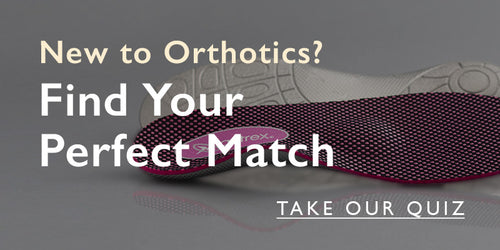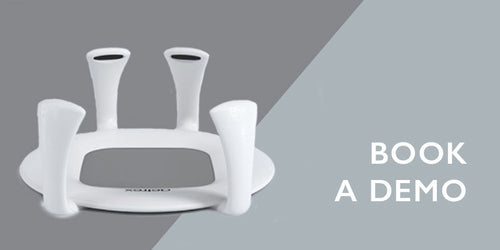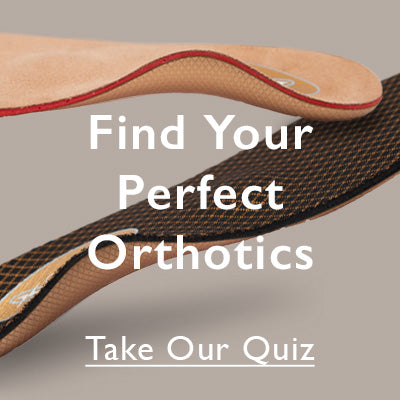Plantar Fasciitis: Causes, Symptoms, Orthotics & Shoes
Plantar fasciitis is a common type of inflammation that occurs when the plantar fascia is excessively stretched. The plantar fascia is a band of fibrous tissue that runs along the bottom surface of the foot that connects each of the toes with part of the heel bone. Every time your foot strikes the ground, the plantar fascia is stretched. The pain is commonly felt in the arch and heel in one or both feet, usually worst in the morning during the first few steps or after sitting for a long period of time time.
CAUSES OF PLANTAR FASCIITIS
Plantar fasciitis results from long-term pressure and excessive strain on the foot. The lead cause of plantar fasciitis is overpronation, or flat feet, which results when the ankle rolls inward and the arch collapses upon weight bearing, causing the plantar fascia to stretch away from the heel.
Other Common Causes:
- Structural foot setbacks like high arches
- High impact activities like running, dancing, or jumping
- Sudden increase in exercise or physical activity
- Sudden weight gain such as obesity or pregnancy
- Standing or walking on hard floors for long periods of time
- Ill-fitting shoes
SYMPTOMS OF PLANTAR FASCIITIS
Plantar fasciitis feels like a stabbing or aching heel pain when you take your first steps in the morning. It can often lead to arch pain; if left untreated and the strain on feet continues, a heel spur may develop. Do you have foot pain? Take the Aetrex Orthotic Quiz to find out what kind of insoles work best for you.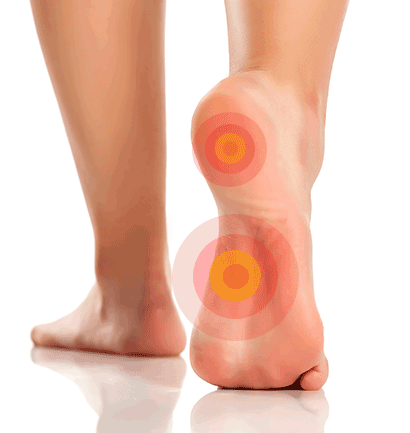
PEDIATRIC PLANTAR FASCIITIS
Just like adults, children can also develop plantar fasciitis from the excessive stretching of the plantar fascia. Children who participate in sports and high-impact activities are more likely to develop plantar fasciitis.
Additional Causes:
- Improper stretching
- Tight calf muscles
- Sudden weight gain
- Ill-fitting shoes
PREVENTION OF PLANTAR FASCIITIS
There are many ways to support your feet to avoid developing plantar fasciitis. If you stand all day at work or walk on hard services, it's imperative to have proper arch and heel support in your shoes/orthotics.
- Avoid running on hard or uneven ground
- Wear orthotics that support your arches and heel
- Wear shoes with proper arch support
- Avoiding wearing high-heeled shoes
- Maintain a healthy weight
TIPS FOR TREATING PLANTAR FASCIITIS
If you are feeling pain from plantar fasciitis, try these tips for relief.
- Choose footwear and orthotics that support your feet
- Avoid walking on hard surfaces
- Stretch the feet and calves
- Massage the feet
- Ice the area 10-20 minutes at a time, up to 3 times per day
- Rest
10 SIMPLE PLANTAR FASCIITIS EXERCISES TO RELIEVE PAIN
Here are a few exercises that will keep your feet strong and help reduce foot & ankle pain. These exercises only take a few minutes and can simply be done at home. Make sure you maintain proper posture by sitting up straight for the exercises that require sitting in a chair.
1. Towel Curls
Sit down in a chair with your heels under your knees. Place your feet flat at the end of the towel and use your toes to pull the other end of the towel towards you. Make sure your heel stays where it is while you move a little bit of towel each time you extend and pull back. Repeat 4-5 times and move in the opposite direction.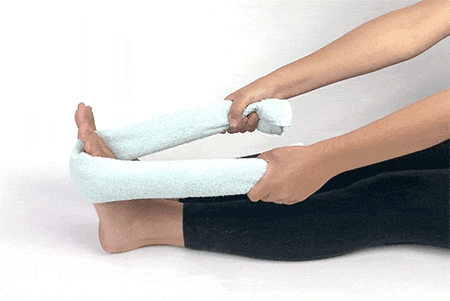
2. Ball Roll
Sit on a chair and place a tennis ball on the floor near your feet. Move your foot on top of the tennis ball and roll it around the ball. Use the ball to massage the bottom of your foot for 3-5 minutes. You can increase or decrease the pressure on the tennis ball as needed.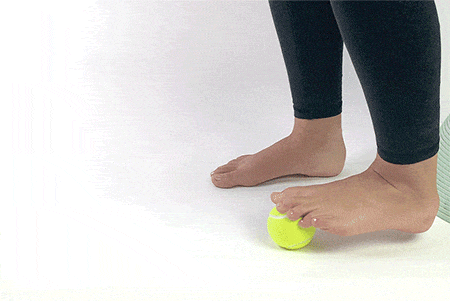
3. Frozen Bottle Roll
Place a bottle of water in the freezer until it turns into ice. Roll the frozen bottle under your foot similar to a ball roll. This helps reduce inflammation.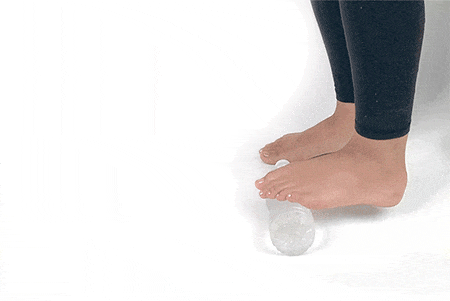
4. Marble Pick Ups
Place marbles and a cup on the floor. Use your toes to pick up one marble and slowly place it in the cup. Repeat it 7-8 times on each foot.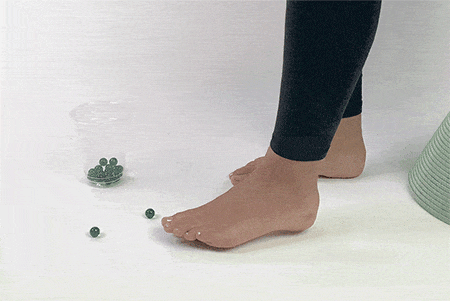
5. Ankle Circles
Sit up straight on a chair and lift your foot to draw circles using the big toe. Draw circles using your big toe clockwise and anticlockwise.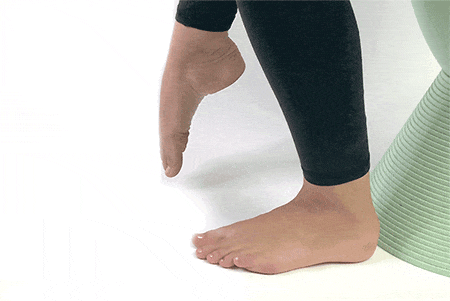
6. Heel Raises
Stand up straight and place your hands on the back of a chair for support. Raise your heels and try to stand on your toes to stretch your arch. Hold this position for 10-20 seconds and lower your heels back down slowly. If you can hold your balance, try the same exercise on a step.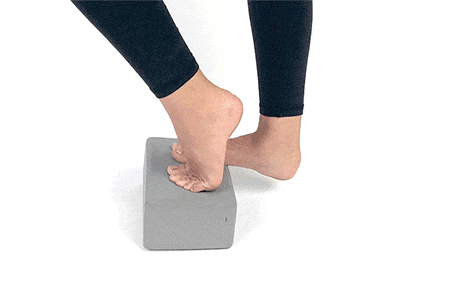
7. Towel Stretch
Sit up straight on the ground with your legs extended and knees straight. Place a folded towel around your foot and gently pull it towards you. Hold it for 15-20 seconds and repeat 3-4 times on each foot.

8. Big Toe Stretch
Sit up straight on a chair and cross one leg over the other. Make sure your other foot is flat on the ground. Hold your big toe with your fingers and gently move it toward you and away from the other toes. Hold this stretch for 15 seconds and move it in the opposite direction for 15 seconds. You can repeat this 3-4 times on each foot.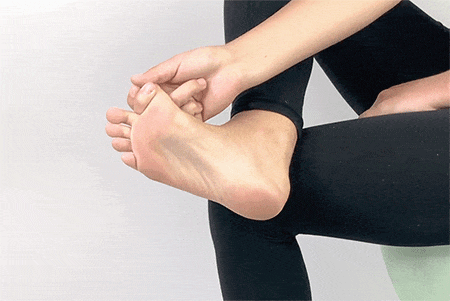
9. Toe Splay
Sit up straight on a chair and place your feet flat on the ground. Spread your toes away from each other and hold the stretch for 5-7 seconds and release. Repeat 5-6 times.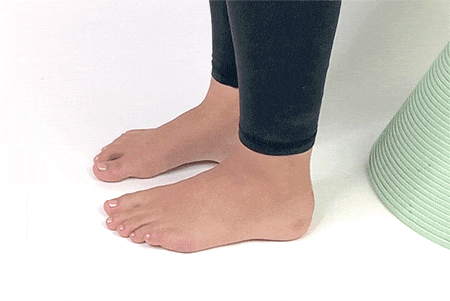
10. Calf Stretch
Stand facing a wall, about one and a half foot lengths away. Place both hands on the wall at shoulder height. Your arms should be outstretched; adjust your feet as necessary. With your feet pointing straight ahead, place one foot in the back of the other. The front leg should have a bent knee and the leg behind it should have a straight knee. Gently bend forward with your right heel on the ground. Hold for the stretch for 15-30 seconds and reverse the position of your legs to repeat the stretch.
HOW TO CHOOSE THE BEST ORTHOTICS FOR PLANTAR FASCIITIS
Orthotics can help relieve plantar fasciitis by cradling the foot and minimizing the repeated stress on the plantar fascia; helping decrease inflammation and pain. There are two important features an orthotic needs to include to help alleviate plantar fasciitis: arch support and heel support. A combination of these features will help prevent the stretching of the plantar fascia. The correct orthotics will help provide extra comfort and reduce the amount of shock and force placed on feet during everyday activities.
Aetrex Orthotics Features:
- Signature Aetrex arch support helps align your body correctly
- Posted heel helps control balance and prevent injuries
- Memory foam for extra cushioning
- Helps provide equal distribution of pressure

The Signature Aetrex arch support is strategically placed further back to provide the right balance and support to the most weight-bearing part of the body and it provides a strong foundation for the plantar fascia to help keep it from stretching which usually occurs when you stand or walk.
HOW TO CHOOSE THE BEST SHOES FOR PLANTAR FASCIITIS
Unsupportive shoes can worsen the pain of plantar fasciitis. Choosing footwear that support your feet is critical to help alleviate discomfort. The most important feature to keep on the top of the list is proper arch support. Aetrex Shoes have supportive features built-in.
Aetrex Shoe Features:
- Supportive arch
- Superior cushioning helps avoid pain in high-pressure areas
- Adjustable straps
- A firm, but flexible midsole
- Cushioning in the arch and forefoot
- Met bar pod
- Bunion pockets
- Padded heel
Check out our list of the 6 Best Flip Flops for Plantar Fasciitis and our Best-Selling Summer Shoes for Plantar Fasciitis!



